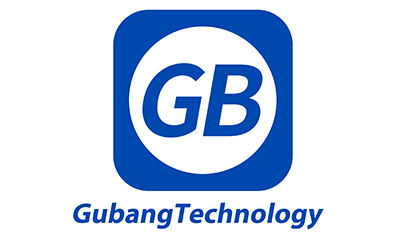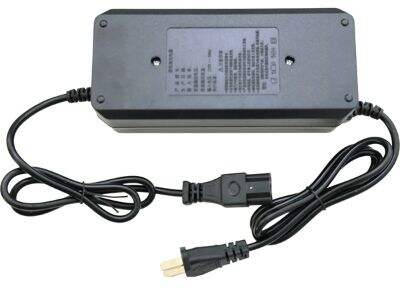Muitas das coisas que vemos e usamos todos os dias, como telefones, tablets e alguns brinquedos, utilizam baterias de lítio. Mas você sabia que existem dois tipos de bateria de lítio? Sim, isso está correto. Para cada variedade de bateria de lítio, há um carregador específico e este é o que opera com mais eficiência. Como Escolher um Carregador de Bateria de Lítio ? Hoje vamos abordar os diversos tipos de carregadores de baterias de lítio e como selecionar um carregador para sua bateria.
Tipos de Carregadores de Bateria de Lítio
Os tipos de baterias de lítio incluem lítio-íon, lítio-polímero e LI-FePO4 (lítio ferro fosfato). Existem três tipos de padrões de carregamento e cada tipo possui suas próprias características únicas e requer um tipo específico de carregador para carregar de forma segura e eficiente.
Isso significa que as baterias de lítio-íon geralmente utilizam um carregador de voltagem constante. Isso significa que o carregador envia a mesma quantidade de eletricidade para a bateria até que ela esteja completamente carregada. Este Carregador de Reparo de Bateria para Carro/Motocicleta impede a supercarga e prolonga a vida útil da bateria.
Portanto, a maioria das baterias de lítio-polímero é carregada usando um carregador de corrente constante/tensão constante (CC/CV). Este carregador inicialmente envia uma corrente constante para a bateria até atingir uma determinada tensão, então muda para tensão constante para completar o carregamento. Isso protege a bateria e garante o carregamento completo.
As baterias LiFePO4 também requerem um estilo de carregamento diferente. Elas geralmente são carregadas com um carregador que carrega com corrente constante até que a bateria esteja quase totalmente carregada, depois entra em um modo flutuante de menor tensão para finalizar o carregamento. E é por isso que o uso das baterias LiFePO4 garantirá uma vida útil mais longa e carregamento seguro.
Escolhendo o Carregador Certo
Depois de conhecer os vários tipos de carregadores de baterias de lítio, como escolhemos o certo? O desafio é compatibilizar o carregador com o tipo de baterias.
Aplique uma tensão constante em um nível apropriado para sua bateria: Encontre um carregador para baterias de íons de lítio que forneça uma tensão constante. Identifique um carregador que venha com recursos de proteção para garantir que sua bateria não seja supercarregada, etc.
Portanto, é melhor usar um carregador CC/CV para baterias de polímero de lítio, que envia uma corrente constante no início e depois uma tensão constante. Isso é para proteger sua bateria enquanto ela está sendo recarregada.
Baterias LiFePO4 exigem ser carregadas com uma corrente constante até que estejam completamente carregadas e, em seguida, reduzir para uma tensão baixa para finalizar o carregamento. Isso aumenta a vida útil da sua bateria.
Opções de Carregamento Rápido
O carregamento rápido é ideal para quem precisa de uma carga temporária. Nem todas as baterias de lítio são capazes de suportar tais velocidades de carregamento, pois uma potência de carregamento alta pode desgastar a bateria mais rapidamente se não for implementada corretamente.
Para carregamento rápido de baterias de lítio, como aquelas com química LiCoO2, só se pode usar um Charger especificamente projetado para carregamento rápido. Esses carregadores são feitos para carregar a bateria sem causar danos rapidamente.
Algumas baterias de íons de lítio podem ser carregadas com um carregador rápido que fornece mais corrente do que os carregadores comuns. Mas sempre siga as diretrizes do fabricante para sua segurança.
Devido a isso, baterias LiFePO4 geralmente não são recomendadas para carregamento rápido, pois isso pode reduzir sua vida útil. Se quisermos que elas funcionem bem e em segurança, é melhor carregá-las devagar.
Aumentando a Vida Útil da Sua Bateria
Para fazer sua bateria de lítio durar mais, é muito importante escolher o carregador adequado para sua bateria. Portanto, certifique-se de usar o carregador correto para evitar problemas como superaquecimento ou sobrecarga.
Além disso, práticas de carregamento adequadas são essenciais. Evite usar carregadores muito genéricos que não foram projetados para o tipo da sua bateria, pois eles podem danificá-la e reduzir sua durabilidade.
Por favor, não carregue sua bateria em condições de temperatura extremas, que afetam seu desempenho e longevidade. A temperatura ideal para carregar geralmente está entre 0°C e 45°C.
O carregador adequado combinado com essas melhores práticas aumentará significativamente a vida útil e o desempenho da sua bateria de lítio.
O próximo grande passo é comparar tecnologias de carregamento.
Várias tecnologias de carregamento funcionam melhor com os diferentes tipos de bateria de lítio.
A tecnologia de carregamento por pulso é comumente usada para baterias de íons de lítio. Carregadores por pulso enviam eletricidade em curtos intervalos para a bateria, evitando o risco de supercarregamento e melhorando a eficiência de carregamento.
No entanto, a tecnologia de carregamento contínuo, que fornece uma pequena quantidade de corrente à bateria por um longo período, funciona bem com baterias de polímero de lítio. Ela mantém a bateria em boas condições e prolonga sua vida útil.
Baterias LiFePO4 também podem utilizar um carregador de dessulfatação, onde as placas da bateria são limpas, melhorando o desempenho geral da bateria. Isso pode fazer com que baterias antigas funcionem melhor e durem mais.
Para carregar baterias de lítio de forma segura e eficiente, você precisa selecionar um carregador apropriado de acordo com o tipo de bateria. Conhecer os diversos carregadores disponíveis e seguir as melhores práticas para carregar sua bateria de lítio contribuirá muito para aumentar a vida útil da bateria e garantir que ela continue funcionando conforme o esperado. Qualquer risco ou responsabilidade herdada é mitigada pelo carregador para baterias de lítio.

 EN
EN










































